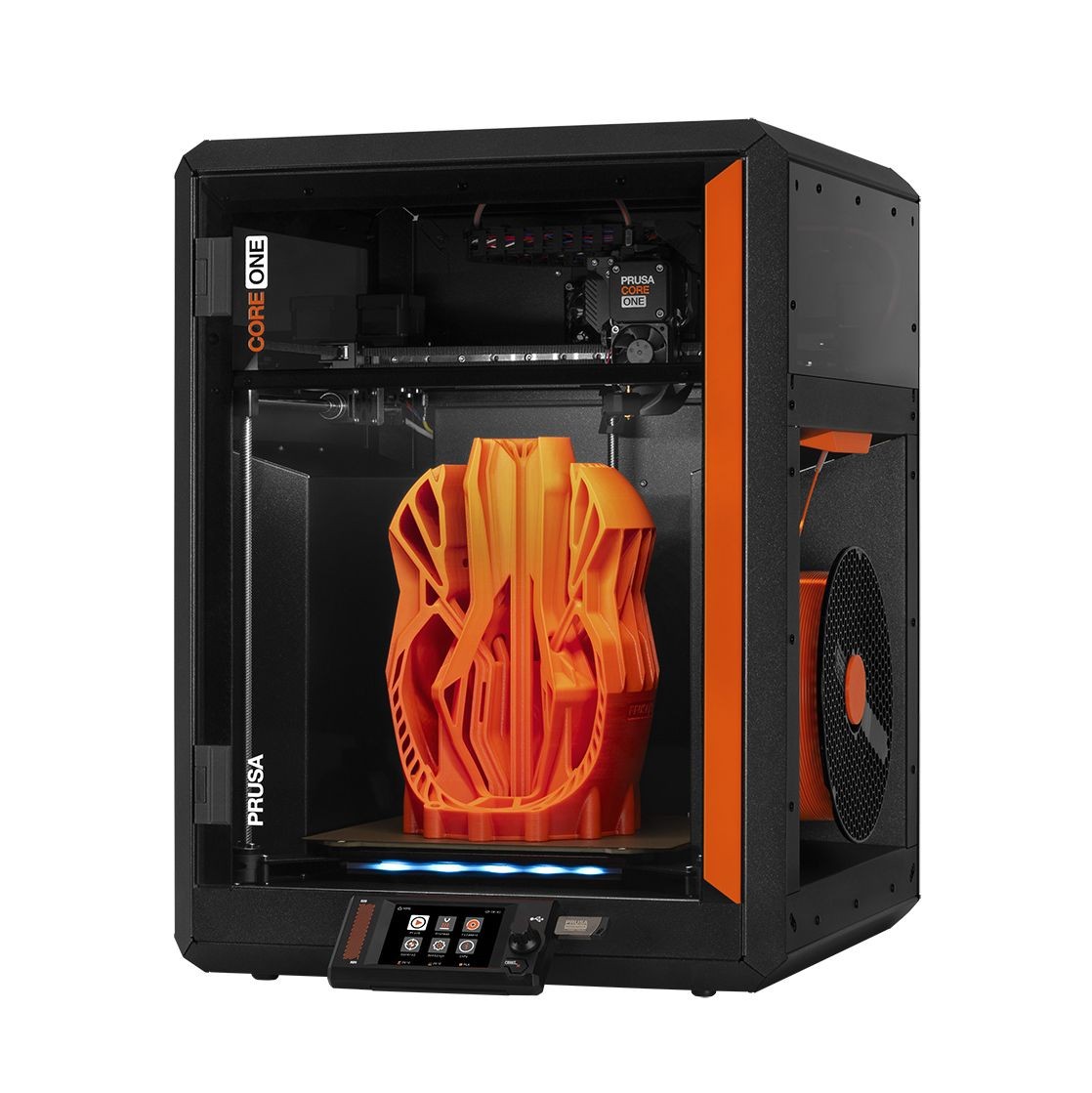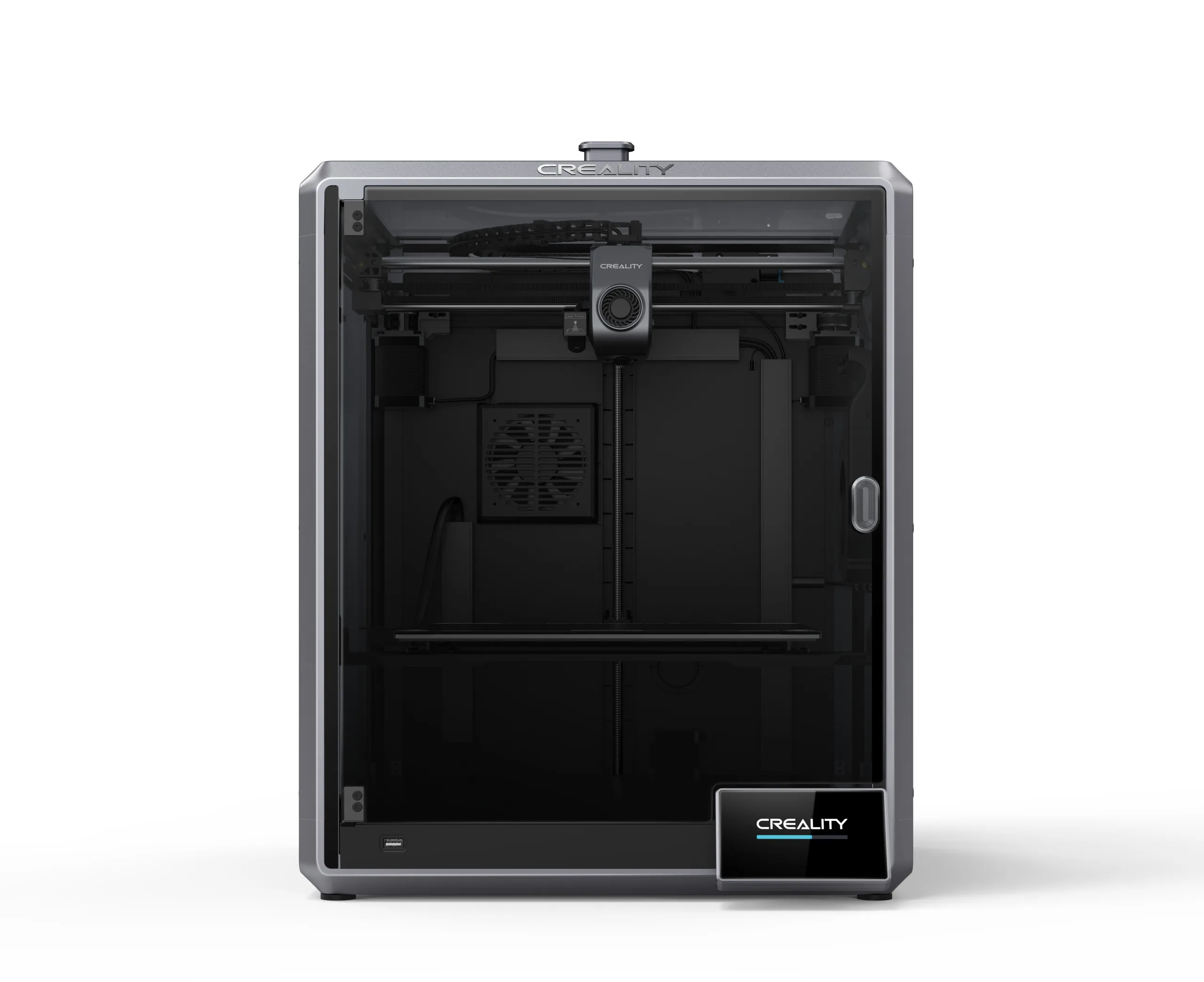Compare Core One vs K1 Max
Comparison between the best 3D printers
Choose the best 3D printer at the best price. The cheapest 3D printers are here.
Buy a 3D printer here with 3D Fila.
 |
 |
|
| Model | Core One |
K1 Max[BUY K1 Max] |
| Printing Material | Filament | Filament |
| Buy Filament for Prusa Core One | Buy Filament forCreality 3D K1 Max | |
| Estimated price | $1200,00 | $1300,00 |
| Manufacturer | Prusa | Creality 3D |
| Release Year | 2025 | 2023 |
| Print Volume [mm] | 250x220x270 | 300x300x300 |
| Printer Size [mm] | 385x340x620 | 435x462x526 |
| Weight [kg] | 14 | 18 |
| Power Loss Recovery | YES | YES |
| Enclosed printer | YES | YES |
| Bed Leveling | Automatic | Automatic |
| Filament End Sensor | YES | YES |
| Bed type | Heated | Heated |
| Power supply system | Direct Drive | Direct Drive |
| Standard nozzle | 0,4 | 0,4 |
| Maximum Nozzle Temperature [°C] | 300 | 300 |
| Maximum Bed Temperature [°C] | 120 | 100 |
| Maximum printing speed [mm/s] | 500 | 600 |
| Filament holder | YES | YES |
| Camera for supervision | NO | NO |
| Recommended filaments | PLA, TPU, TPE, HIPS, ABS, PETG, WOOD, PC, PA, PVA, ASA | ABS, PLA, PETG, TPU, PA, ASA, PC, PLA-CF, PA-CF, PET-CF |
| Recommended slicers | Cura, Prusa Slicer, Orca | Creality Print, Cura, Simplify, Slic3r, IdeaMaker e outros |
| Maximum Resolution [mm] | 0,01 | 0,1 |
| Processor | xBuddy 32 bit | |
| Display | Touchscreen 3,5'' | Display touchscreen 4,3'' |
| Power Supply | 240 W | |
| Connectivity | SD | USB / Wi-Fi / Ethernet |
| Operating systems | Windows, Linux e Macbook | Windows, Mac, Linux |
| Date of registration in the system | 2024-11-27 | 2023-12-01 |
| Release date | 2025 | 2023 |
| Extra features | The Prusa Core One is a CoreXY 3D printer featuring a robust steel frame, a 3.5" touchscreen, and a heated chamber for technical filaments. It offers 360° cooling for improved print quality and supports upgrades from the MK4S model. With a compact design, a print volume of 270x250x220 mm, and compatibility with the MMU3 for multi-color printing, it stands out for its ease of maintenance, precision, and speeds up to 260% faster than the MK3S+. | The Creality K1 Max stands out as a fast Core XY 3D printer with a large build volume of 300 x 300 x 300 mm. It is fully enclosed and equipped with AI sensors to prevent print failures. This model has a smooth and flexible PEI build platform, and uses an automatic leveling system with LIDAR, as well as a filament run-out sensor. LAN, Creality Cloud and USB Flash Disk connectivity are available, as well as a 4.3-inch touchscreen interface. The K1 Max is robust, weighing in at 18 kg, and includes an AI camera and limited version of the Klipper firmware. Its motion system is solid and the printer is efficient with high-temperature filaments, but it is not silent. Assembly is 99% complete, requiring only minor adjustments before use. |
| Support for multiple colors and materials (AMS and CFS) | YES | NO |
Notes * |
||
| Cost-benefit | 7 / 10 | 7 / 10 |
| Hardware | 6 / 10 | 4.8 / 10 |
| Tela | . | . |
| Print volume | 3 / 10 | 4 / 10 |
| Performance | 4 / 10 | 5 / 10 |
| [BUY K1 Max] |
Conclusion |
| In comparing the Prusa Core One and the Creality K1 Max, both models bring distinct features tailored for different user needs. The Core One, priced slightly lower, offers a compact design with a moderate print volume. It excels in user-friendly features such as a robust steel frame, a responsive touchscreen, and versatility in filament compatibility, including advanced filaments thanks to its high maximum bed temperature. Additionally, its speed and precision are noteworthy, benefiting users who prioritize quality and ease of maintenance. On the other hand, the K1 Max, while a bit more expensive, provides a larger build volume and innovative AI sensors designed to enhance printing reliability. The printer also boasts a variety of connectivity options and an advanced automatic leveling system, making it suitable for users who value automation and larger projects. Its substantial weight adds stability during operation, and the inclusion of features geared towards high-temperature materials positions it as a solid choice for demanding applications. In conclusion, the decision between the Core One and K1 Max hinges on specific user requirements: the Core One is ideal for those seeking a compact, high-quality machine for a range of filaments, whereas the K1 Max caters to users desiring a robust printer with an emphasis on speed and build volume. Both printers rank similarly in cost-benefit analysis, making them competitive choices in the market, albeit diversely focused. |

